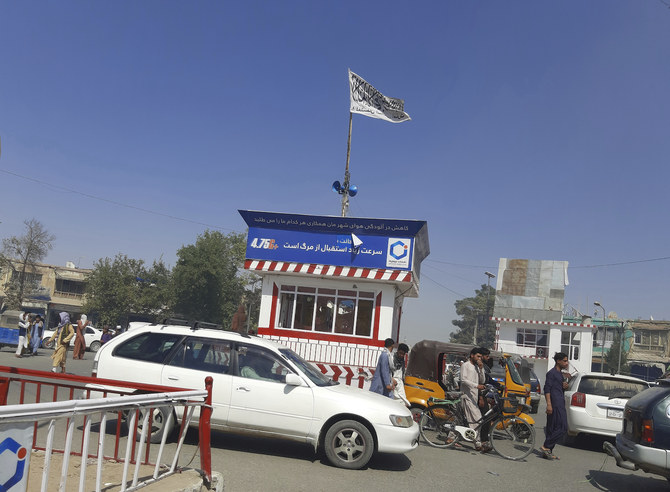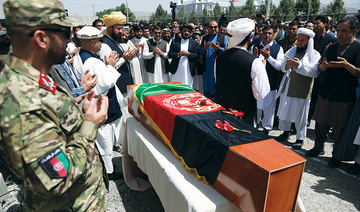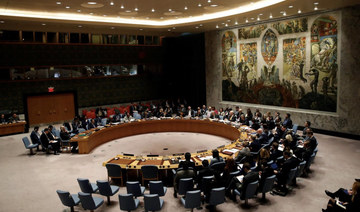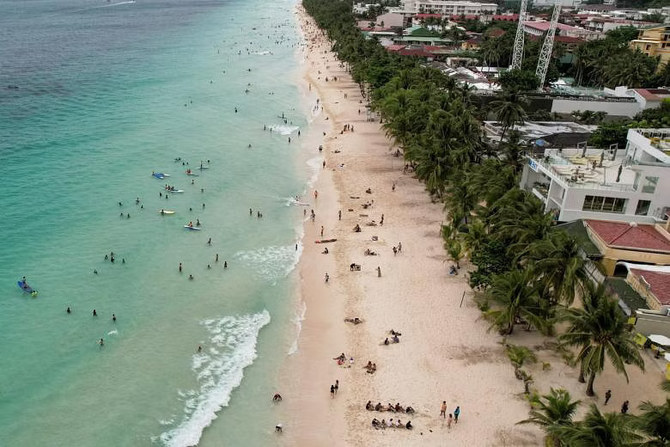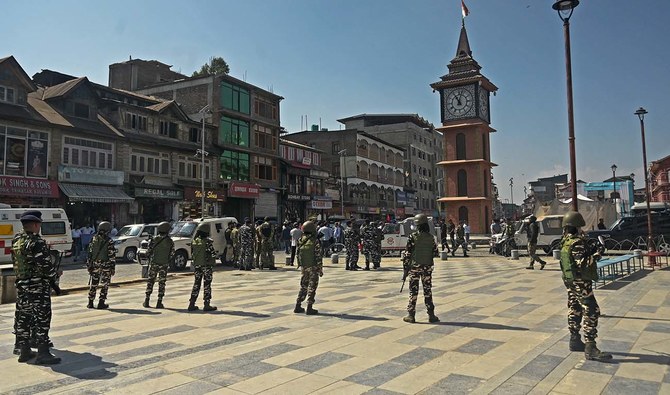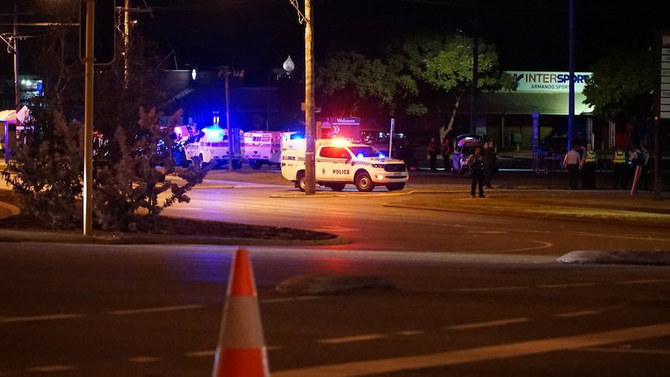KABUL: The Taliban on Sunday seized control of two more towns from government forces in northern Afghanistan, lawmakers from the area told Arab News as they lamented the loss of four provinces to the insurgents in the past three days.
The fall of Kunduz and Sar-i-Pul will put more pressure on an embattled Kabul government that has failed to curb Taliban advances despite the resumption of US B-52 bomber strikes against the group, which has stepped up attacks after Washington announced it would end its military mission in Afghanistan by the end of August.
“Sar-i-Pul is gone. The Taliban have taken the entire province without a fight,” Hamidullah Beg, a legislator representing the province, told Arab News.
He accused the provincial police chief of “siding with the Taliban” in capturing the rugged region near Shiberghan, a gateway for northern Afghanistan that the Taliban took over on Saturday.
Beg said that Taliban and Afghan forces exchanged heavy fire near an army base, the last remaining government institution outside the group’s control.
The group has also seized government buildings in the northeastern city of Kunduz, as government troops hang onto control of the airport and their base, a provincial lawmaker said on Sunday.
Nilofar Jalali Koofi said that after two days of intense battles, the Taliban had also taken over the governor’s compound, and the police and intelligence headquarters.
“The only thing that remained outside the Taliban’s control until two hours ago was the airport. The security forces resisted a lot, there was street-to-street fighting for 48 hours, but the Defense Ministry failed to send them supplies and equipment on time,” Koofi told Arab News.
“Part of the city has been on fire; people’s houses have been hit by shelling. The planes are hovering but have not bombed yet,” she said.
Videos footage circulating on social media showed huge plumes of smoke rising from a bazaar in Kunduz, with residents struggling to extinguish the fire.
FASTFACT
Kabul government has failed to curb Taliban advances despite the resumption of US B-52 bomber strikes against the group.
While several security sources in Kunduz, located near the border with Tajikistan, and Sar-i-Pul, 70 km to Kunduz’s west, confirmed lawmakers’ accounts, government officials in Kabul refused to comment on the latest loss of territory.
“The fall of four provinces in three days shows the Taliban’s ability on the battlefield and indicates the government’s growing weakness,” retired army colonel Mohammad Hassan told Arab News.
“Now the Taliban will not face much resistance in the north following their latest advances as they have managed to besiege some other cities through their fresh gains,” Hassan, who works as an analyst, added.
Besides making rapid territorial gains in rural Afghanistan in recent months, the Taliban have focused on major cities such as Herat in the west, and Kandahar and Lashkar Gah in the south, over the past 10 days.
On Friday, the insurgents captured their first provincial capital in years when they took control of Zaranj, on the border with Iran in Afghanistan’s southern Nimroz province, adjacent to Lashkar Gah province, while on Saturday they overran Shiberghan, despite US and Afghan officials saying a heavily armed B-52 plane had pounded Taliban’s positions in the area, “killing scores of the militants.”
The Taliban were unavailable for comment when contacted by Arab News on Sunday.
However, in a statement released to the media, the group said that the air raid had caused “casualties among civilians” in Shiberghan and Lashkar Gah, where a school and a clinic were among buildings hit in the attack.
To curb the Taliban’s drastic advances on major cities in the past two weeks, the US military began using the B-52 planes from outside Afghanistan on Taliban positions.
The planes were mainly used at the start of the Afghan war and considered highly effective in the ousting of the Taliban in a US-led invasion in 2001.
As the remaining foreign troops exit Afghanistan after nearly 20 years of occupation, it remains unclear if Washington will continue to extend aerial support to Afghan forces after the end of August.
The uncertainty comes amid a warning issued by the US and Britain in the past two days ordering citizens to leave Afghanistan “immediately” amid the “worsening security situation” in the country.
Several former and current US military officials have also cautioned that the Afghan government “may collapse after six months” once foreign troops leave.
The Taliban have overrun dozens of districts, and border crossings with Pakistan, Iran and Central Asia, since May 1, sparking concerns it will regain power by force similar to its move in the 1990s, amid fears that the war-scarred nation could descend into another civil war when foreign troops complete their exit by month-end.
The latest development comes less than a day after UN special envoy for Afghanistan, Deborah Lyons, said that the Afghan war had entered a “new, deadlier and more destructive phase” with more than 1,000 civilians killed in the past month during a Taliban offensive.
“This is now a different kind of war reminiscent of Syria, recently, or Sarajevo, in the not-so-distant past,” she said during a special meeting of the UN Security Council on Afghanistan in New York.
Major powers such as the US and Britain refused to “support the restoration of the Islamic Emirate” of the Taliban during the meeting.
On Sunday, the US embassy in Kabul condemned the Taliban’s “violence new offensives against several Afghan cities,” saying the attacks contradict the group’s claim that it is in “favor of a negotiated settlement of the crisis.”
The latest surge of fighting comes as millions of Afghans are experiencing a harsh drought, the perils of COVID-19 and deep poverty, while nearly 3.5 million Afghans have been displaced by conflict and natural disasters such as floods and drought in recent years.



